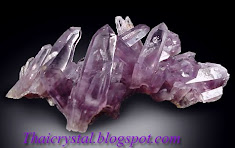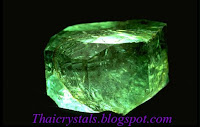Padparadscha
Padparadscha is a pink-orange corundum, with a low to medium saturation and light tone, originally being mined in Sri Lanka, but also found in deposits in Vietnam and Africa; Padparadscha sapphires are very rare and highly valued. The name derives from the Sinhalese word for lotus blossom. Along with rubies, they are the only type of corundum to be given their own name instead of being called a particular colored sapphire. The rarest of all padparadschas is the totally natural variety, with no sign of treatment.
A star sapphire
A star sapphire is a type of sapphire that exhibits a star-like phenomenon known as asterism. Star sapphires contain intersecting needle-like inclusions (often the mineral rutile, a mineral composed primarily of titanium dioxide[8]) that cause the appearance of a six-rayed 'star'-shaped pattern when viewed with a single overhead light source.
The Black Star of Queensland is believed to be the largest star sapphire, weighing in at 733 carats.[9] The Star of India (563.35 carats) is thought to be the second largest star sapphire and is currently on display at the American Museum of Natural History in New York City. The 182 carat Star of Bombay, housed in the National Museum of Natural History, Washington D.C., is an example of a blue star sapphire. The value of a star sapphire, however, depends not only on the weight of the stone but also the body color, visibility and intensity of the asterism

Custom Search


















































